Staats Mill Covered Bridge
Introduction
Text-to-speech Audio
Images
Staats Mill Covered Bridge at the Cedar Lakes location
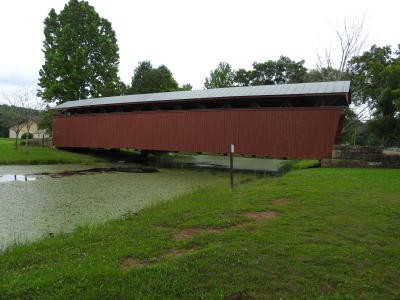
Staats Mill Covered Bridge at the original location
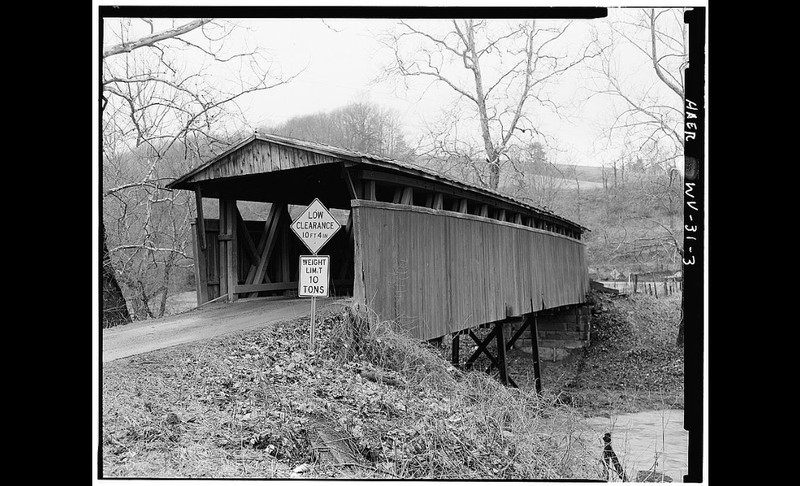
Interior of the bridge at original location. Note the iconic Long trusses
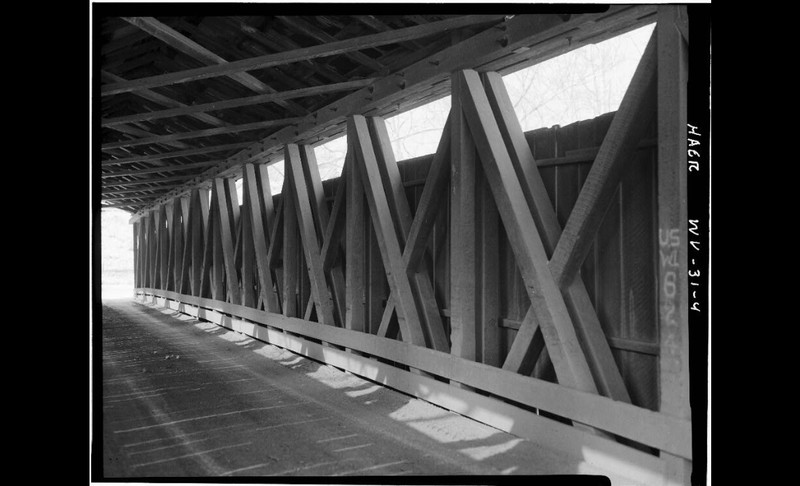
Architectural sketch of the bridge's Long trusses
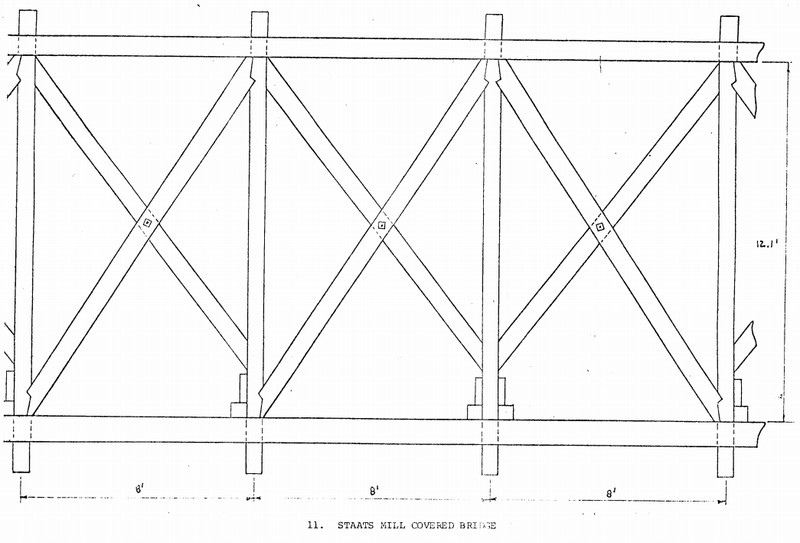
Historical marker at the bridge's current location

Historical marker at the bridge's original location
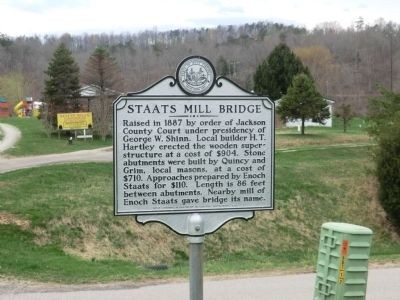
Backstory and Context
Text-to-speech Audio
In 1887, the Jackson County Court appointed George W. Shinn, George I. Walker and S. M. Rader to identify an appropriate spot for a bridge crossing Big Mill Creek. After the court accepted the men’s proposal for a location, William Quincy and J. Grim built stone abutments for $710.40. H. T. Hartley built the wooden superstructure for $903.95. Enoch Staats, the owner of the bridge's namesake Staats Mill, created dirt fills for approaches to the bridge for $110. The total cost of the bridge was $1788.35, which is approximately $50,000 adjusted for inflation. The bridge was completed by the end of 1887.
The Staats Mill Covered Bridge measures eleven feet wide and ninety-seven feet long. It is an exemplary structure built using the Long truss system. This style of truss was patented by Stephen H. Long in 1830. It utilizes a series of vertical posts connected by diagonal cross beams. A defining feature of the Long truss is that they are constructed exclusively from wood, with no metal playing supporting functions. The Staats Mill Covered Bridge is rather unique because despite being almost 100 feet long, the bridge uses no load-bearing arch in conjunction with the Long trusses – a clear testament to the quality of the craftsmanship. The vertical siding is painted red and a standing seam metal roof covers the structure.
In 1971, extensive modifications were made to the deck of the Staats Mill Covered Bridge. The entire floor was under-girded by steel beams and the timber floor was replaced. This new floor was then paved over with an asphalt surface to improve longevity. The bridge continued to serve vehicle traffic for another eleven years after this renovation, before being selected for relocation in 1982. In 1983, the bridge was moved to the Cedar Lakes Conference Center for a cost of $104,000. As part of this rehabilitation, the bridge was completely restored to its original 1887 state.
These days, the Staats Mill Covered Bridge accommodates only pedestrian traffic. Two historical markers are associated with the bridge. The Staats Mill Covered Bridge marker stands near the current location of the bridge on Cedar Lakes grounds. The Staats Mill Bridge marker commemorates the original location of the Staats Mill Covered Bridge near where Staats Mill Road crosses Mill Creek. The bridge is an extremely significant example of covered bridge architecture. The Long truss style used without a spanning arch contributes to the unmarred integrity of the design. The Staats Mill Covered Bridge is one of only two covered bridges left in Jackson County, the other being Sarvis Fork Covered Bridge.
Sources
Hanson, Todd A. Covered Bridges, The West Virginia Encyclopedia. May 28th 2019. Accessed August 20th 2020. https://www.wvencyclopedia.org/articles/1660.
Historic American Engineering Record. Staats Mill Covered Bridge, Spanning Tug Fork River, Routes 40W & 34, Ripley, Jackson County, WV, Library of Congress. January 1st 1968. Accessed August 21st 2020. https://www.loc.gov/item/wv0252/.
KCI Technologies, Inc and Mead & Hunt, Inc. West Virginia Statewide Historic Bridge Survey: Final Survey Report, Highways Through History. April 1st 2015. Accessed August 20th 2020. https://www.highwaysthroughhistory.com/Content/bridges/WVSHBSFinalSurveyReport.pdf.
Manning, J. R., et al. Staats Mill Covered Bridge, Bridge Hunters. November 17th 2019. Accessed August 21st 2020. https://bridgehunter.com/wv/jackson/staats-mill-covered/.
Morfe, Don. Staats Mill Bridge, The Historical Marker Database. June 16th 2016. Accessed August 21st 2020. https://www.hmdb.org/m.asp?m=73653.
Morfe, Don. Staats Mill Covered Bridge, The Historical Marker Database. June 16th 2016. Accessed August 21st 2020. https://www.hmdb.org/m.asp?m=73652.
Pauley, Michael J. Staats Mill Covered Bridge, National Register of Historic Places. March 26th 1979. Accessed August 21st 2020. http://www.wvculture.org/shpo/nr/pdf/jackson/79002582.pdf.
Statts [sic] Mill , West Virginia Department of Transportation. Accessed August 21st 2020. https://transportation.wv.gov/highways/bridge_facts/covered-bridges/Pages/StattsMill.aspx.
Jack Schmidt
Historic American Engineering Record
Historic American Engineering Record
Michael J. Pauley
Don Morfe
Don Morfe
